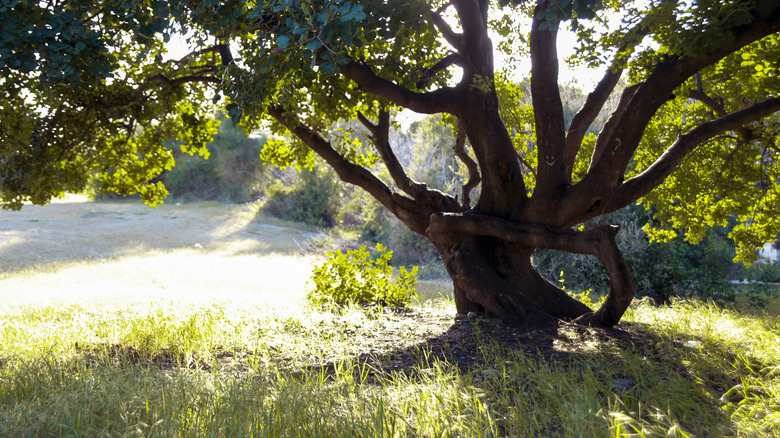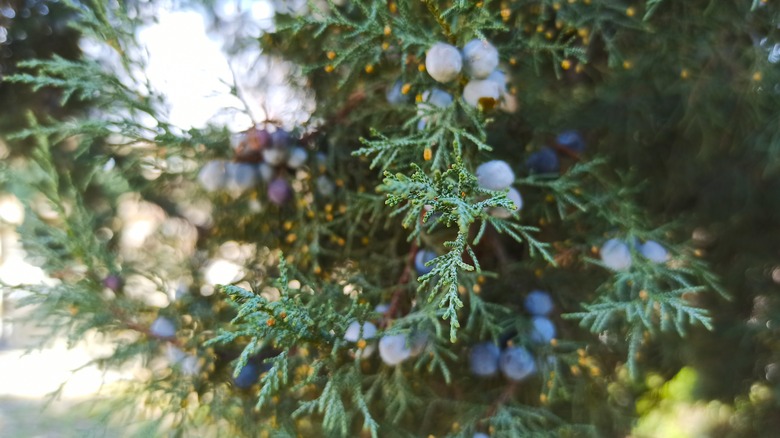What You Need To Know Before Planting A Carob Tree In Your Yard For Shade
There are few things nicer than sitting in the shade of a tree with a cool drink on a hot day. If you live in hardiness zones 9 to 11 and want to successfully grow a shade tree without too much hassle, a carob (Ceratonia siliqua) would seem to be ideal. It originates in the Mediterranean, so it is extremely tolerant of heat. Rarely prone to disease, this tree will grow in most types of soil as long as it doesn't get too wet. It's evergreen and develops a spreading canopy with rich green leaves. It even has sweet, edible fruit and pods that can be fed to livestock.
It all sounds pretty good so far, but there are a few things you should know before planting a carob tree in your yard. They can eventually grow to over 50 feet, so although they might look modest down at the nursery, they're going to grow to be a whole lot bigger. They also have prolific root systems that stay near the surface and can cause problems with other planting. The carob tree produces abundant fruit, which seems great until you have to clear up hundreds of fallen pods. It's not just hard work — some people compare the smell of those pods to gym socks.
It's invasive, and not just in your yard
Growing carob trees in large containers allows you to benefit from the shade they offer while managing their size, and it also keeps the invasive roots from spreading. These trees need very little encouragement to grow from seed, however, as they have escaped cultivation and can be found growing wild in several states. Being a non-native plant isn't necessarily a problem, but California considers it an invasive weed that can inhibit native plants. The problem of control is made worse because coyotes eat the fruit and then spread the seeds in their scat.
While there's a lot to like about the carob tree in regards to providing shade in your yard, some will feel the negatives outweigh the positives. Fortunately, it's not difficult to find alternative shade trees that are native to the U.S., with the added benefit of providing food and habitat for local insects, birds, and wildlife. Northern Catalpa (Catalpa speciosa) has broad leaves and white flowers and, despite also being called the Indian Bean Tree, is indigenous. The American Sycamore Tree (Platanus occidentalis) is a classic beauty and fast growing. For evergreen foliage, it's hard to beat the Eastern Red Cedar (Juniperus virginiana) which, as you might guess from the Latin, is not a true cedar but actually a juniper.

